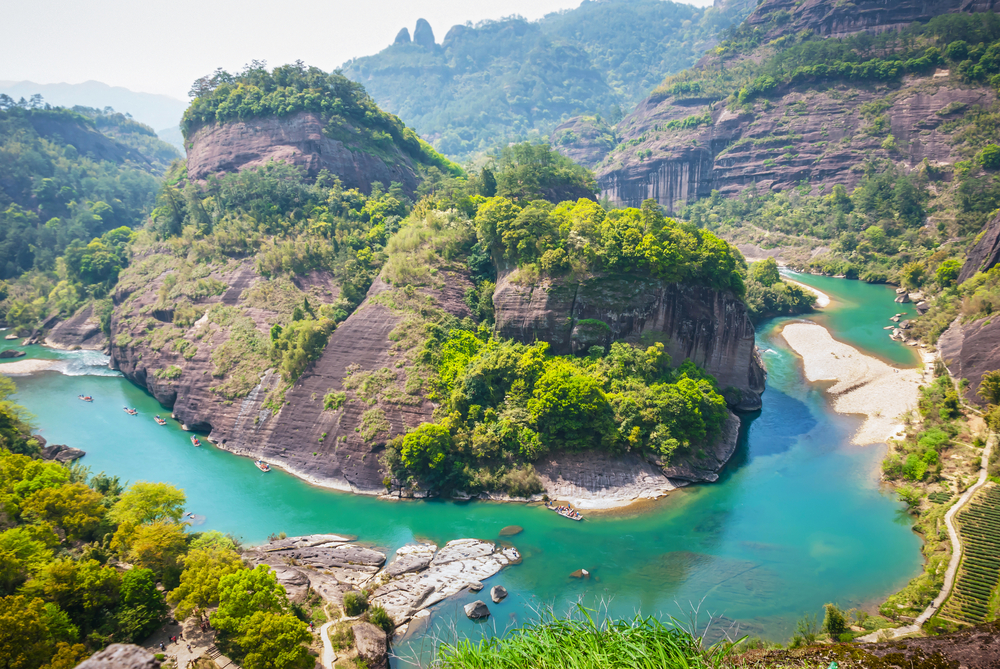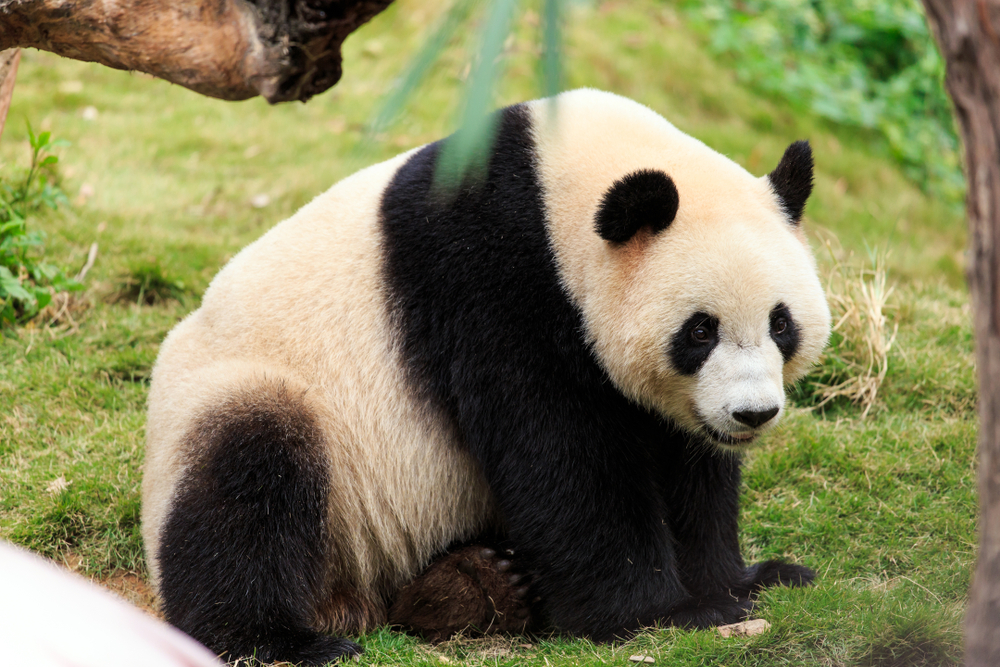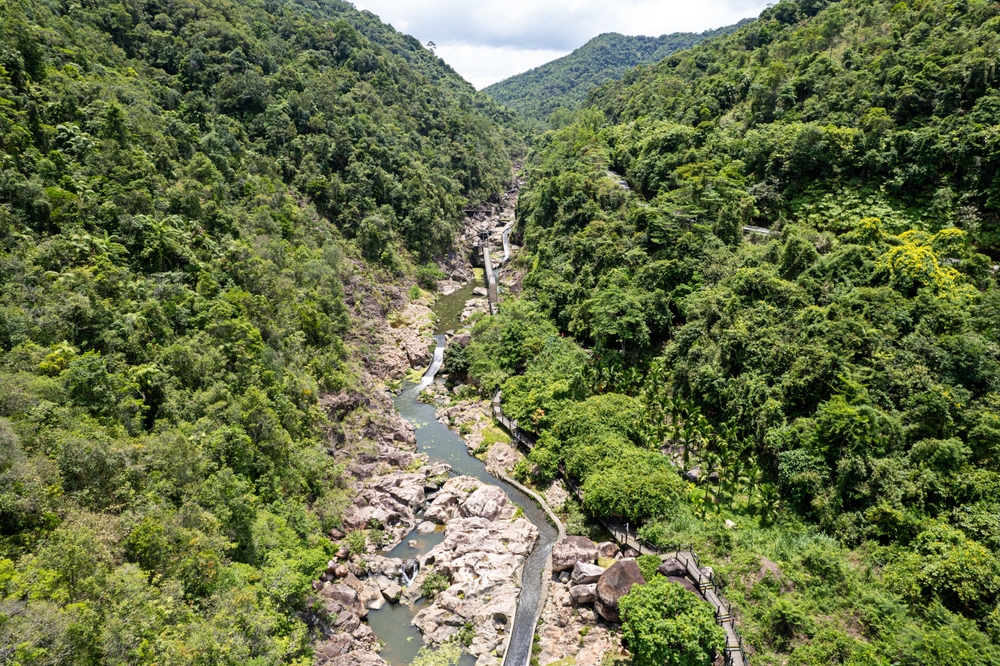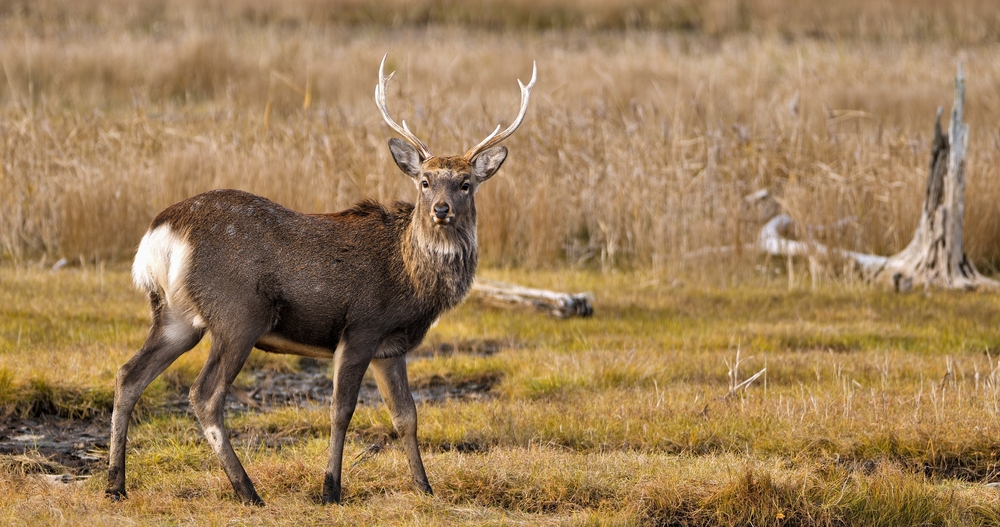Wuyi Mountains Overview
Wuyi Mountains National Park, also known locally as Wuyishan (武夷山), is a UNESCO World Heritage Site located in the Fujian Province of southeastern China. Spanning approximately 43 square miles (111 square kilometers), this stunning park is renowned for its remarkable biodiversity, cultural significance, and breathtaking landscapes. The park is a harmonious blend of lush forests, meandering rivers, towering cliffs, and peculiar rock formations that create a serene and mystical ambiance.
The terrain of Wuyi Mountains National Park is dominated by undulating mountain ranges, with peaks that rise dramatically, the most notable being Mount Wuyi. The Nine-Bend Stream (Jiuquxi) winds its way through the park, offering visitors picturesque views of verdant valleys and crimson-hued cliffs. The lush vegetation includes dense bamboo forests, subtropical evergreen broadleaf trees, and a myriad of flowering plants, creating a vibrant canvas that changes with the seasons. The park is also home to several ancient tea plantations, including the famous Dahongpao (Big Red Robe) tea, which is cultivated in its unique rocky terrain.
Wildlife enthusiasts will find the park a haven for observing rare and endangered species. Among its inhabitants are the Chinese giant salamander, pangolins, and a variety of reptiles and amphibians. Birdlife is particularly abundant, with species such as the Elliot’s pheasant and the crested goshawk frequently spotted. The park’s rivers and streams teem with aquatic life, including several endemic fish species.
Visitors can engage with the park in numerous ways. A bamboo raft ride along the Nine-Bend Stream offers a tranquil way to immerse oneself in the scenic beauty, while hiking trails provide access to ancient temples, cliffside carvings, and panoramic viewpoints. The park also holds significant cultural heritage, including ruins of ancient Han Dynasty academies and Taoist and Buddhist temples, making it a fascinating destination for history buffs.
Challenges in the park include balancing conservation efforts with the growing influx of tourists. Authorities have implemented strict regulations to minimize human impact, including limiting access to sensitive areas and promoting eco-friendly tourism. Conservation projects focus on protecting the park’s unique biodiversity and preserving its cultural landmarks.
In summary, Wuyi Mountains National Park is a natural and cultural treasure of China, offering a blend of scenic splendor, rich biodiversity, and historical significance. Its striking landscapes and diverse wildlife make it a must-visit for nature lovers and cultural enthusiasts alike.














































































